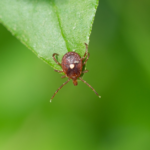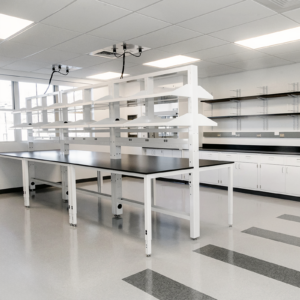The ongoing fight against the Covid virus took a dramatic turn in December 2022 with the rapid emergence of a new variant, XBB.1.5.
In this Formaspace laboratory report, we’ll take an in-depth look at the genetic lineage of this highly infectious new variant.

Major Shifts in Covid Variants Started in the Fourth Quarter of 2022 Before the Arrival of XBB.1.5
When we look at the CDC data on the relative presence of Covid variants, there was a noticeable shift taking place in October 2022.
In the first week of October, the Covid Omicron variant BA.5 was still the dominant strain, responsible for about 75% of infections, followed by BA.4.6 (at just over 10%) and BF.7 trailing (at under 5%.)
However, beginning in October, the percentage of BA.5 infections (and to a lesser degree BA.4.6) began to decline significantly each week.
Was this due to the introduction of the bivalent vaccines targeting the original Covid infection and Omicron variants BA.4 and BA.5 at the end of August?
We don’t know for sure yet.
The timing is suspect, however, because things began to shift very quickly, likely too quickly for the general population to uptake the vaccine and for it to take effect.
Within about 4 weeks of the FDA approving the bivalent vaccine, the variants BQ.1 and BQ.1.1 began rising quickly, cutting the percentage of BA.5 infections in half by mid-November.
You can see the shift away from BA.5 in the CDC’s Covid Data tracker above, which covers the period from the first week of October 2022 to the first week of January 2023.

Origins of the XBB.1.5 Variant
Mid-October 2022 was also the point when another new variant, XBB, first made its significant appearance on the CDC’s Covid Data Tracker.
An international group of scientists led by Japanese researchers has been studying the new XBB variant and, according to their pre-print paper, Virological characteristics of the SARS-CoV-2 XBB variant derived from recombination of two Omicron subvariants, this new variant emerged somewhere in and around the Indian sub-continent in the summer of 2022.
Importantly, according to the researchers, the new XBB variant marks the first time that a significant Covid variant has arisen from the recombination of two different variants rather than from a series of mutations derived from a single existing variant.
The two “parents” of XBB are BA2.10.1.1 (also known as BJ.1) and BA.2.75.3.1.1 (also known as BM.1.1.1), both of which have been circulating throughout southeast Asia.
The important changes that the XBB introduces are in its spike protein. A mutation to the spike protein (F486) makes it more difficult for the immune system to fight XBB, even for individuals who have been vaccinated or have had earlier Covid infections.

The good news was that the research team found that the F486 spike mutations rendered the virus less able to attach to ACE2 receptors on human cells – meaning the virus was less likely to spread quickly.
This seems to be confirmed by data compiled by the CDC. In looking at the chart above, you can see the XBB has not become a dominant variant strain – it appears to have maxed out at about 5% of all variants during the past six weeks.
Unfortunately, this was a short-lived distinction.
XBB mutated again (mutation F486P) creating the new XBB.1.5 variant that is causing so much concern today. It is believed this mutation occurred in October 2022, somewhere in the New York area.
Compared to its parent, XBB.1.5 has an increased ability to attach to the ACE2 receptors while retaining its ability to evade immunity conferred from vaccines (including the new bivalent vaccines) or previous Covid infections.
Another team of researchers, publishing in Cell Magazine, has confirmed that XBB (and its progeny XBB.1) as well as BQ.1 (and its progeny BQ.1.1) are the most immune-resistant variants to date. They found that all existing monoclonal antibodies were ineffective and that vaccines, including the bivalent booster, were significantly less effective against these variants.

The Rapid Rise of the Covid XBB.1.5 Variant in the USA
Where do we stand at the start of 2023?
During the first week of January, the prevalence of the two variants targeted in the bivalent vaccine dropped to new lows across the USA, with BA.4.6 at less than 0.2%, BA.5 at 3.7%, and BA.5.2.6 at 0.7%.
The new landscape is dominated by BQ.1 at 21.4% and its progeny BQ.1.1 at 34.4% while the XBB variant remains at 4.9%. But the clear emerging threat is XBB.1.5, which leaped from a negligible number to 27.6% of all infections in just 6 weeks.
When we look at the geographic distribution across the US, the rapid spread of the XBB.1.5 variant becomes more apparent. Since first making its presumed appearance in the New York area in October, XBB.1.5 has largely crowded out other variants in New York and the New England states (up to 46.5% of cases), and it’s now responsible for the majority of cases in Middle Atlantic states.
XBB.1.5 has increased to roughly 20% of all cases in the Southeast and South West Central states.
The lowest presence of the XBB.1.5 was found in the Upper Midwest and Central Plains states, and along West Coast (including Idaho, Nevada, and Arizona.)
What are the Implications of XBB.1.5 for Public Health?
Many of us, including public health officials, will admit hearing that yet another significant Covid variant has arrived is unwelcome news. Indeed, “Covid fatigue” is real; many people are tired of hearing about the virus and are inclined to ignore public health recommendations.
However, due to the highly transmissible nature of the XBB.1.15 variant, efforts should be made to help protect the vulnerable, including immunocompromised individuals, the elderly, and the very young.
This includes returning to a regimen of good hygiene (especially handwashing), avoiding crowds, and wearing masks (where appropriate) should be given priority. There is some evidence that maintaining sufficient levels of Vitamin D (including small amounts of Vitamin K2 to help absorption) and Zinc can help us resist infection.
At this time, there is no evidence that XBB.1.15 produces a more dangerous version of the disease, but there are fewer treatment options available. For example, any currently available mononuclear antibodies are not expected to be effective. On the other hand, antiviral pills Paxlovid and Molnupiravir should provide some relief according to health officials, although this will need to be confirmed in practice.
Existing rapid flow and PCR Covid tests should continue to work as before, e.g. be able to indicate any positive Covid infections.

The biggest question is where do we go from here with Covid vaccines? The newest bivalent vaccine was intended to knock out Omicron variants BA.4 and BA.5 – and indeed, these two variants have retreated significantly. Although as we pointed out earlier, it’s not yet clear whether there was a direct “cause and effect” leading to their demise, or if the rise of new variants, such as XBB.1.5, was an inevitability.
On balance, the bivalent vaccine and booster does appear to offer increased immunity, even if it does provide significantly less protection for the XBB.1.5 variant.
It would be ideal if we could develop a vaccine or clinical therapy that could wipe out the Covid virus entirely, rather than play an ongoing game of “whack-a-mole” where we respond to new variants with updated mRNA vaccines only to find a new variant escapes the immunity conferred by the vaccine.
If this is not possible, then Covid will remain an endemic disease, much like the Flu, that regularly changes its outer characteristics year after year.

Formaspace is Your Laboratory Research Partner
If you can imagine it, we can build it, here at our factory headquarters in Austin, Texas.
Talk with your Formaspace Design Consultant today to find out how we can work together to make your next laboratory construction project or remodel a success.















